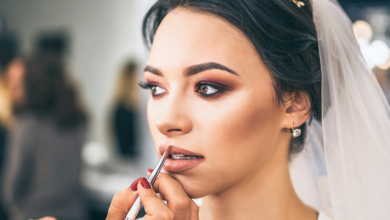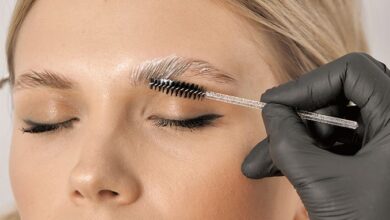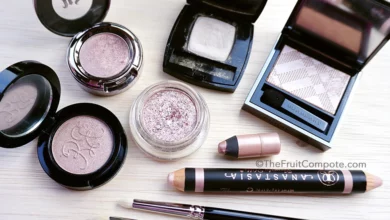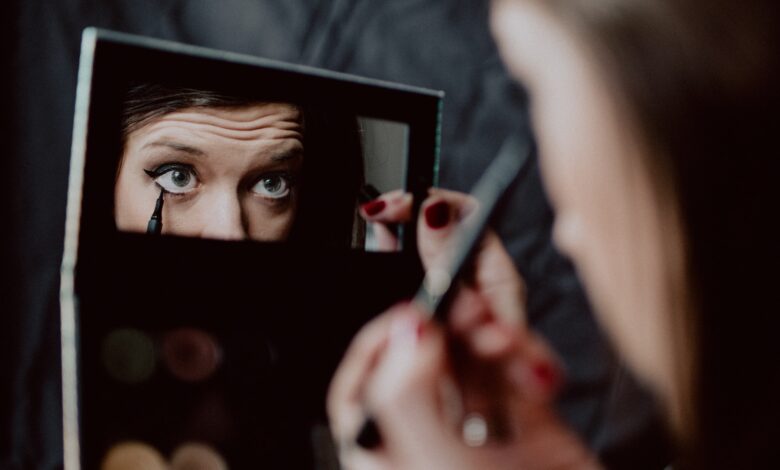
Are you tired of dealing with irritated, red eyes every time you wear eye makeup? Look no further! In “The Essentials Of Eye Makeup For Sensitive Eyes: Stylish.ae’s Guide,” we have curated a comprehensive guide just for you. Whether you have naturally sensitive eyes or are simply prone to allergies, this article will provide you with the essential tips, tricks, and product recommendations to ensure that you can rock beautiful eye makeup without any discomfort. Say goodbye to watery eyes and hello to stunning, vibrant looks that will make heads turn. Let’s dive in and discover the secrets to flawless eye makeup for sensitive eyes!
Understanding Sensitive Eyes
If you have sensitive eyes, you know how frustrating it can be to find eye makeup products that won’t cause irritation. Sensitive eyes can be easily irritated by certain ingredients commonly found in makeup, such as fragrances and harsh chemicals. Fortunately, with a little understanding and some helpful tips, you can still enjoy wearing eye makeup without any discomfort.
Causes of Eye Sensitivity
There are several common causes of eye sensitivity. Allergies and sensitivities to certain ingredients are often the main culprits. Fragrances, preservatives, and dyes are common irritants found in many eye makeup products. External factors such as pollution, dry air, and excessive rubbing or touching of the eyes can also contribute to eye sensitivity.
Identifying Your Eye Sensitivity
To determine what specifically causes your eye sensitivity, it is essential to pay attention to how your eyes react to different products. Keep a record of the products you use and note any signs of irritation or discomfort. Redness, itching, watery eyes, and a burning sensation are all signs that your eyes may be sensitive to certain ingredients.
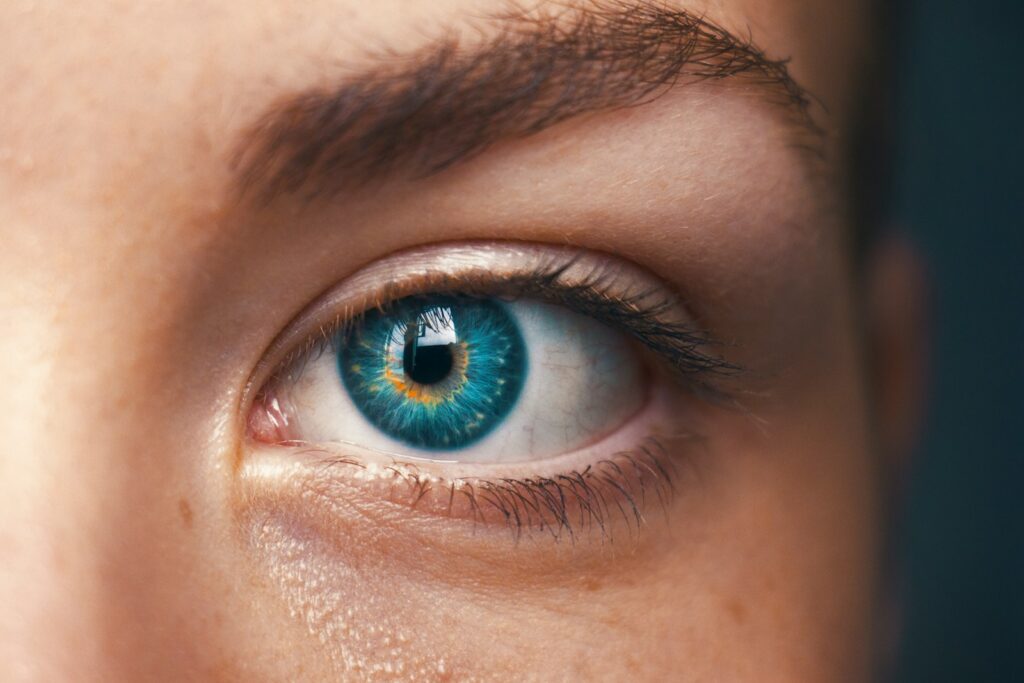
Choosing the Right Eye Makeup Products
One of the first steps in managing sensitive eyes is to choose the right eye makeup products. Here are some things to consider when selecting products:
Ingredients to Avoid
When shopping for eye makeup, it is essential to avoid certain ingredients that can trigger eye irritation. Fragrances, parabens, sulfates, and phthalates are common irritants that should be avoided. Look for products that are labeled “fragrance-free” and “hypoallergenic.”
Hypoallergenic and Fragrance-Free Options
Hypoallergenic and fragrance-free eye makeup options are specifically formulated to minimize the risk of irritation. These products are free of common allergens and are more suitable for individuals with sensitive eyes. Look for brands that specialize in sensitive skin or allergy-friendly products.
Testing Products on a Small Patch of Skin
Before applying new eye makeup products all over your eyes, it is essential to test them on a small patch of skin. Apply a small amount of the product on your wrist or the inside of your elbow and wait for 24 hours to see if any irritation occurs. If there is no reaction, it should be safe to use the product on your eyes.
Prepping Your Eyes
Properly prepping your eyes before applying makeup can help minimize any potential irritation. Here are some steps you can take to prepare your eyes for makeup:
Cleansing the Eye Area
Before applying any makeup, it is crucial to cleanse your eye area to remove any dirt, oil, or previous makeup residue. Use a gentle, fragrance-free cleanser or a makeup remover specifically formulated for sensitive eyes. Be sure to rinse thoroughly and pat dry with a clean towel.
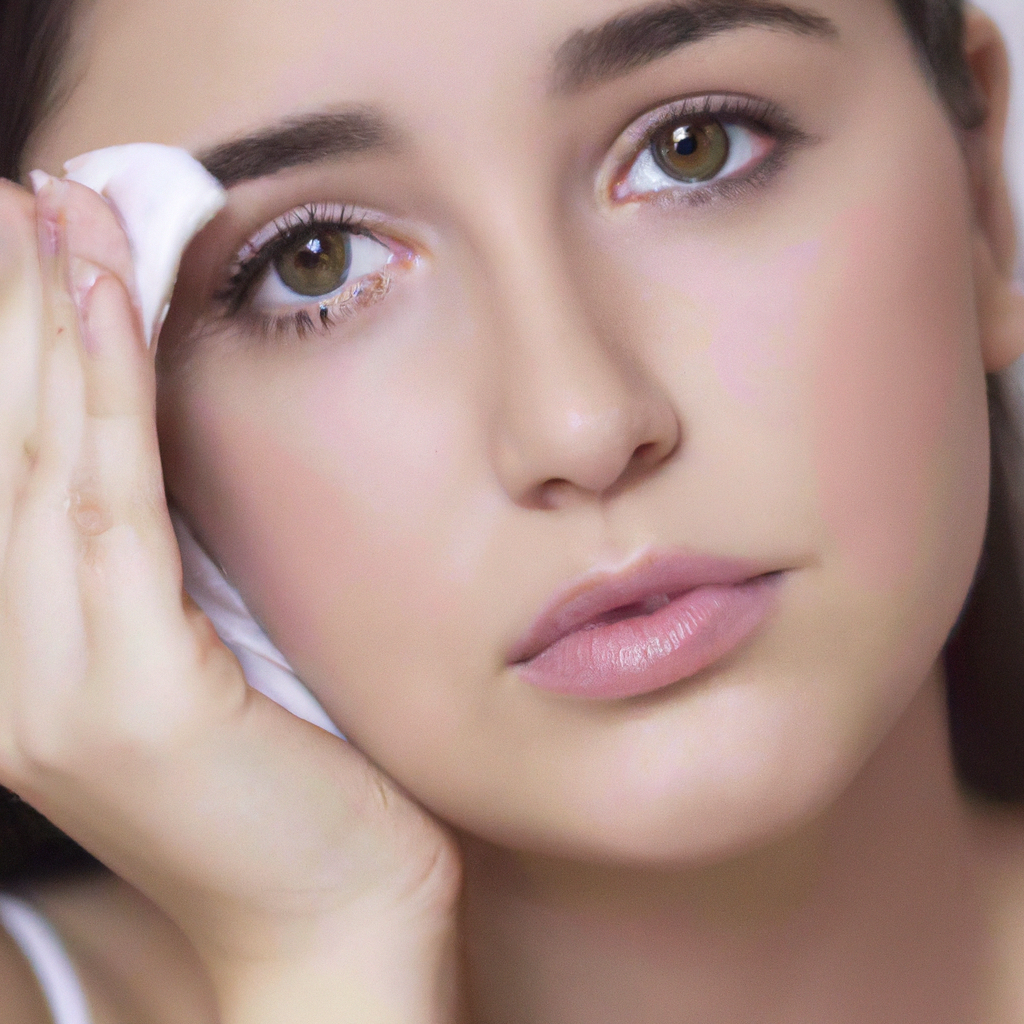
Moisturizing the Eye Area
Keeping your eye area moisturized is essential for individuals with sensitive eyes. Look for a gentle, fragrance-free eye cream or moisturizer that is designed for sensitive skin. Apply a small amount to the under-eye area and gently massage it in with your fingertips.
Using a Primer
Using an eye primer can help create a smooth base for your eye makeup and can also enhance its longevity. Look for a primer that is formulated for sensitive eyes and is free of irritating ingredients. Apply a thin layer to your eyelids, focusing on areas where you usually experience creasing or fading.
Choosing the Right Eye Makeup Products
Choosing the right eye makeup products is key to preventing irritation and discomfort. Here are some factors to consider when selecting eye makeup:
Ingredients to Avoid
As mentioned earlier, it is crucial to avoid certain ingredients that can irritate sensitive eyes. Fragrances, parabens, sulfates, and phthalates are common irritants that should be avoided. Look for products that are specifically labeled “fragrance-free” and “hypoallergenic.”
Hypoallergenic and Fragrance-Free Options
Opting for hypoallergenic and fragrance-free eye makeup products can greatly reduce the risk of eye irritation. These products are specially formulated to be gentle on sensitive eyes and are less likely to cause any allergic reactions. Look for brands that prioritize sensitivity and allergy-friendly formulations.
Testing Products on a Small Patch of Skin
To ensure that a new eye makeup product won’t cause any irritation, it is advisable to test it on a small patch of skin before applying it to your eyes. Dab a small amount of the product on your wrist or the inside of your elbow and wait for 24 hours to see if any adverse reactions occur. If there are no signs of irritation, you can safely use the product on your eyes.
Applying Eye Shadow
Eye shadow can add depth and dimension to your eyes, but it can also cause irritation if not applied properly. Here are some tips for applying eye shadow for sensitive eyes:
Using Powder vs. Cream Shadows
Powder eye shadows are generally better suited for individuals with sensitive eyes as they tend to have fewer irritating ingredients compared to cream shadows. Powder shadows are also easier to blend and can provide a more natural look. Opt for shades that are free of glitter and shimmer, as these can be more likely to cause irritation.
Avoiding Glitter and Shimmer
While glitter and shimmer can add a glamorous touch to your eye makeup, they can also irritate sensitive eyes. The particles in these types of eye shadows can fall into your eyes and cause discomfort. Opt for matte or satin finishes instead, as they are less likely to cause irritation.
Blending Techniques
Proper blending is essential for achieving a seamless eye shadow look without causing any irritation. Use a clean, fluffy brush to blend the shadow gently. Avoid applying excessive pressure or rubbing the brush against your eyelids, as this can lead to redness and discomfort. Gradually build up the color with light, sweeping motions until you reach your desired intensity.
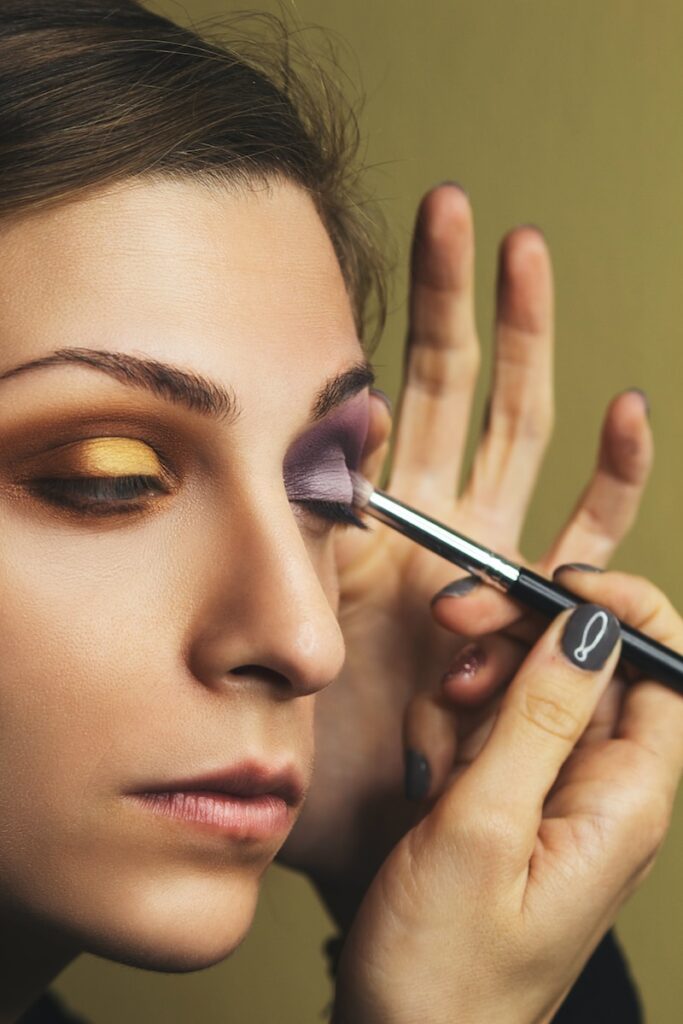
Applying Eyeliner
Eyeliner can define and enhance the shape of your eyes, but it can also be a source of irritation for sensitive eyes. Here are some tips for applying eyeliner without any discomfort:
Types of Eyeliners for Sensitive Eyes
When it comes to eyeliner, opt for formulations that are specifically designed for sensitive eyes. Pencil eyeliners are generally a safe choice, as they tend to have fewer irritants compared to liquid or gel eyeliners. Look for eyeliners that are labeled “hypoallergenic” and “fragrance-free.”
Applying Eyeliner Without Tugging
Applying eyeliner with gentle, sweeping motions can help prevent tugging and pulling on the delicate skin around your eyes. Start at the inner corner of your eye and work your way outward with light pressure. Avoid stretching or pulling your eyelids, as this can cause irritation and discomfort.
Removing Eyeliner Properly
Properly removing your eyeliner at the end of the day is just as important as applying it correctly. Use a gentle, fragrance-free makeup remover that is designed for sensitive eyes. Soak a cotton pad with the remover and hold it over your closed eyelid for a few seconds to allow the product to dissolve the liner. Gently swipe the pad from the inner to the outer corner of your eye to remove the liner, without rubbing or pulling on your eyelids.
Applying Mascara
Mascara can help lengthen and volumize your lashes, but it can also cause irritation if not chosen and applied correctly. Here are some tips for applying mascara for sensitive eyes:
Choosing the Right Mascara Formula
When selecting a mascara for sensitive eyes, look for formulas that are labeled “hypoallergenic” and “fragrance-free.” These formulas are generally gentler on the eyes and less likely to cause irritation. Opt for mascaras that are ophthalmologist-tested to ensure that they are suitable for sensitive eyes.
Avoiding Waterproof Mascaras
Waterproof mascaras are notorious for their strong hold, but they can also be more challenging to remove and can cause more irritation. Instead, opt for regular, non-waterproof mascaras that are formulated for sensitive eyes. These mascaras are usually easier to remove and are less likely to cause any discomfort.
Applying Mascara Without Clumping
To avoid clumpy lashes, wipe off any excess mascara from the wand before applying it to your lashes. Start at the base of your lashes and wiggle the wand back and forth as you move it upward. This technique helps to evenly distribute the product and prevent clumps. If necessary, you can apply multiple thin coats for added volume, allowing each coat to dry before applying the next.

Eyebrow Makeup
Eyebrow makeup can help define and shape your brows, but it is important to choose products that are suitable for sensitive eyes. Here are some tips for eyebrow makeup for sensitive eyes:
Pencil or Powder Eyebrow Products
Pencil and powder eyebrow products are generally safe options for individuals with sensitive eyes. Choose a shade that matches your natural brow color and opt for products that are labeled “hypoallergenic” and “fragrance-free.” Pencil products can help create precise, hair-like strokes, while powder products can add a softer, more natural look.
Defining and Shaping Brows
When applying eyebrow makeup, use light, feathery strokes to fill in any sparse areas or define the shape of your brows. Begin by outlining the bottom edge of your brows and then fill in any gaps with short, upward strokes. Use a spoolie brush to blend the product and create a more natural appearance.
Avoiding Harsh Chemicals
To minimize the risk of irritation, avoid eyebrow products that contain harsh chemicals or ingredients that may cause sensitivity. Look for products that are specifically formulated for sensitive eyes and brows. These products are often more gentle and less likely to cause any discomfort.
Avoiding Eye Irritation
In addition to choosing the right eye makeup products and applying them correctly, there are other steps you can take to avoid eye irritation. Here are some tips to keep in mind:
Properly Removing Eye Makeup
At the end of the day, it is crucial to remove your eye makeup properly to reduce the risk of irritation. Use a gentle, fragrance-free makeup remover that is suitable for sensitive eyes. Soak a cotton pad with the remover and hold it over your closed eyelid for a few seconds to allow the product to dissolve the makeup. Gently swipe the pad from the inner to the outer corner of your eye to remove the makeup, without rubbing or pulling on your eyelids.
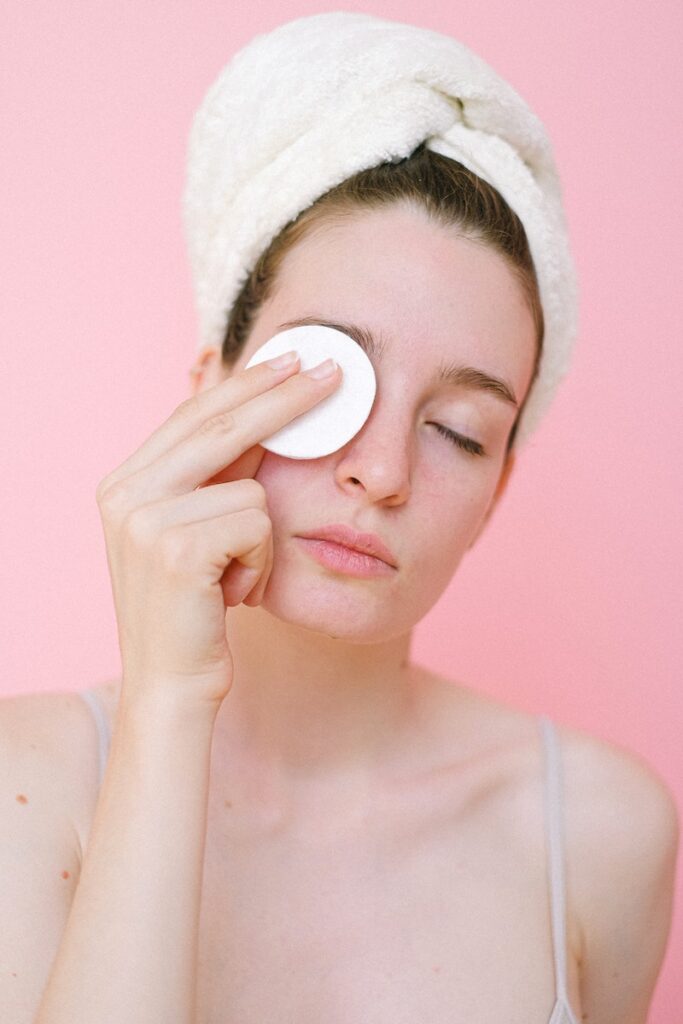
Minimizing Product Expiration
Expired eye makeup products can harbor bacteria and increase the risk of eye infections. Pay attention to the expiration dates on your eye makeup products and replace them regularly, especially mascaras and eyeliners. Avoid using any product that has changed in consistency, color, or smell, as these can be signs of product deterioration.
Avoiding Eye Infections
To prevent eye infections, it is essential to practice good hygiene when applying and removing eye makeup. Wash your hands thoroughly before touching your eyes or handling any eye makeup products. Avoid sharing eye makeup with others to prevent the spread of bacteria. If you suspect an eye infection, promptly seek medical attention and discontinue the use of any eye makeup until the infection has cleared.
Tips for Sensitive Eye Makeup
In addition to the specific steps mentioned, here are some general tips to keep in mind when it comes to wearing eye makeup with sensitive eyes:
Keeping Eye Makeup Brushes Clean
Regularly cleaning your eye makeup brushes is important to prevent the buildup of bacteria that can cause eye irritation. Wash your brushes with a gentle, fragrance-free brush cleanser or mild shampoo and warm water. Be sure to rinse them thoroughly and allow them to air dry completely before using them again. Clean brushes will not only help prevent irritation but also ensure smoother and more even application of makeup.
Avoiding Touching Your Eyes Throughout the Day
Try to avoid touching your eyes throughout the day, as this can transfer bacteria and irritants from your hands to your eyes. Rubbing or scratching your eyes can also cause redness and irritation. If you need to adjust your makeup or relieve any discomfort, use a clean tissue or cotton swab and avoid direct contact with your eyes.
Storing Eye Makeup Properly
Properly storing your eye makeup can help maintain its quality and prevent contamination. Keep your eye makeup in a cool, dry place away from direct sunlight and humidity. Close the lids tightly after each use to prevent drying out or exposure to air. Avoid storing your eye makeup in the bathroom, as the moisture and heat can accelerate bacteria growth.
Makeup Removal for Sensitive Eyes
Removing your eye makeup at the end of the day is essential to keep your eyes healthy and minimize the risk of irritation. Here are some tips for gentle and effective makeup removal for sensitive eyes:
Gentle Eye Makeup Removers
Choose a gentle, fragrance-free eye makeup remover that is specifically formulated for sensitive eyes. These removers are designed to dissolve and remove makeup without causing any irritation. Look for oil-based or micellar water-based removers, as they are generally more effective in removing stubborn eye makeup.
Using Micellar Water
Micellar water is a gentle and effective option for removing eye makeup, especially for individuals with sensitive eyes. Soak a cotton pad with micellar water and hold it over your closed eyelids for a few seconds to allow the product to dissolve the makeup. Gently swipe the pad from the inner to the outer corner of your eye to remove the makeup. Repeat the process until all the makeup is removed.
Double Cleansing the Eye Area
After removing your eye makeup with a gentle remover, it is beneficial to perform a double cleanse to ensure all traces of makeup are removed. Use a mild, fragrance-free facial cleanser or a gentle eye-specific cleanser to cleanse your eye area. Massage the cleanser gently onto your eyelids and lashes, then rinse thoroughly with lukewarm water. Pat dry with a clean towel.
By understanding the causes of eye sensitivity, identifying your specific eye sensitivity, and choosing the right eye makeup products, you can enjoy wearing eye makeup without any discomfort. Remember to properly prep your eyes, select the right products, and apply them correctly to minimize the risk of irritation. Take care of your eye makeup brushes, avoid touching your eyes, and practice proper makeup removal techniques. With these tips in mind, you can confidently wear eye makeup that enhances your natural beauty while keeping your sensitive eyes happy and healthy.

